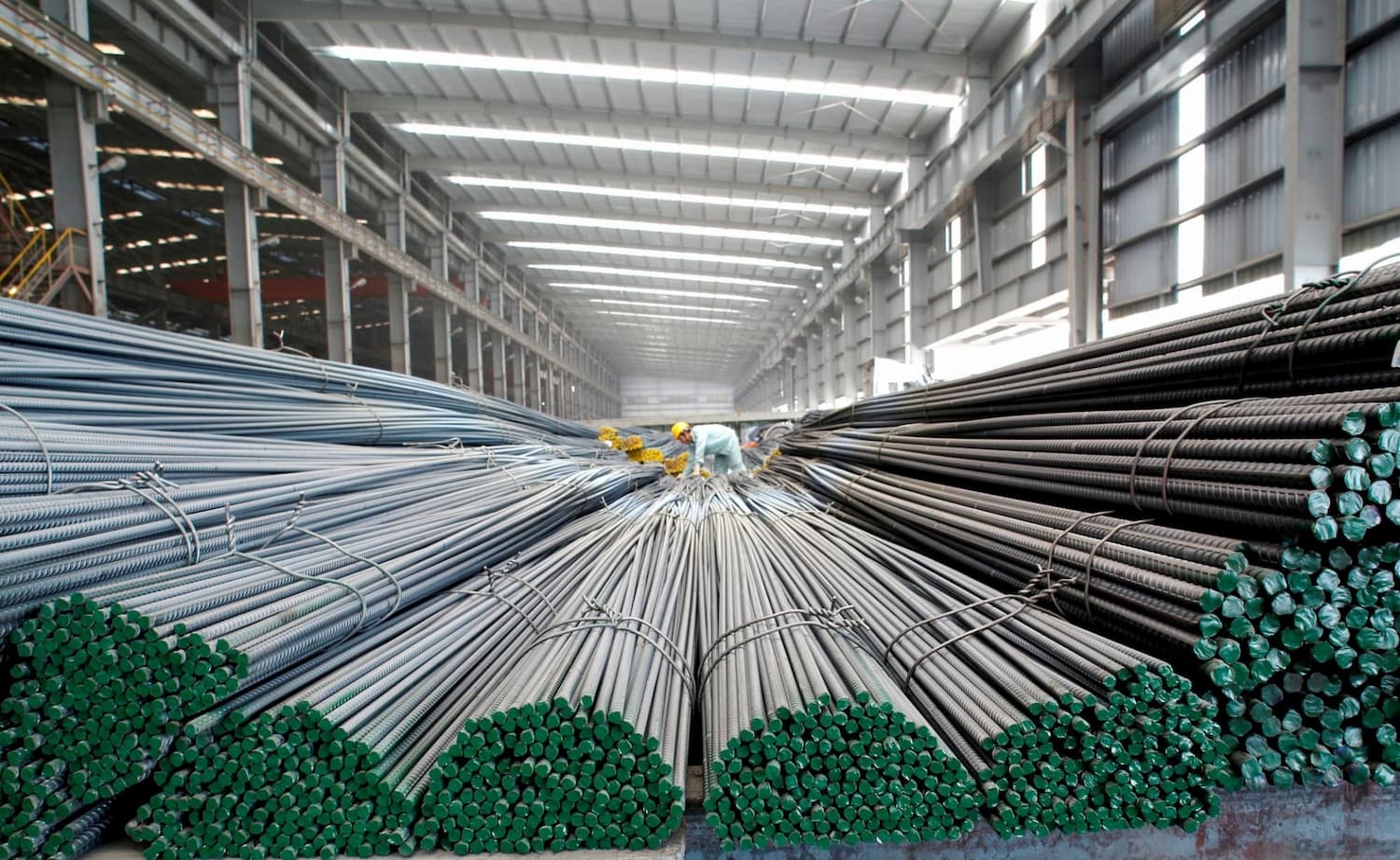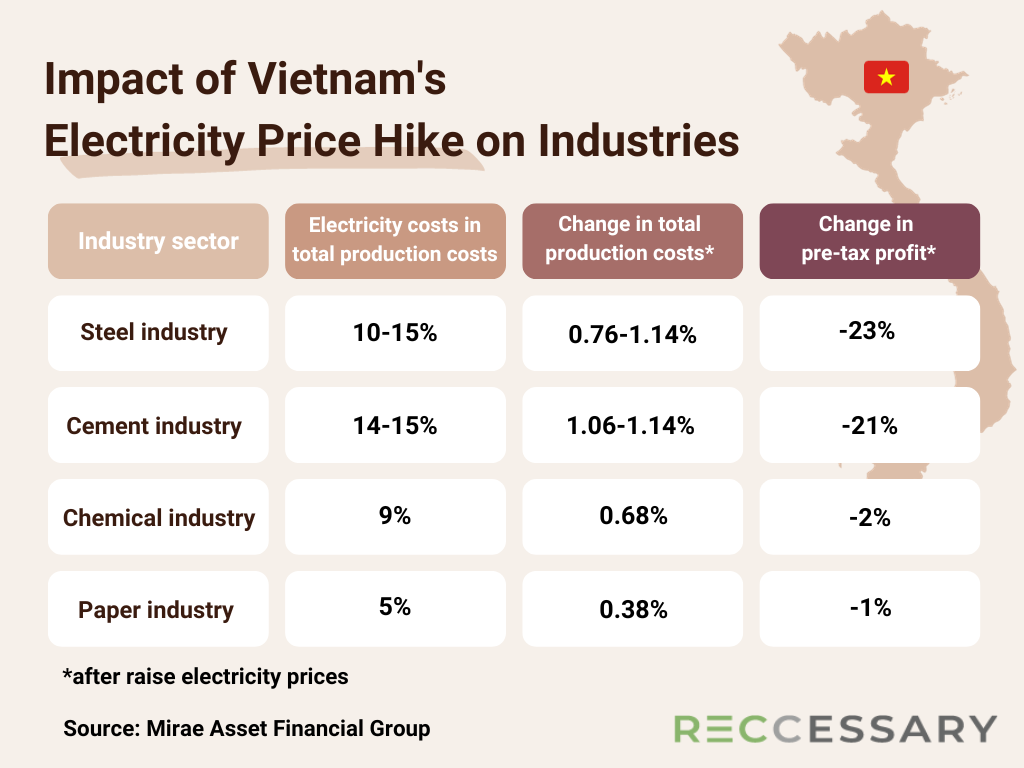Vietnam has increased electricity prices twice within a year to improve the cash flow and repay ability of Vietnam Electricity Group (EVN), which has a positive impact on the whole power sector. However, the production costs of steel and cement have risen as well.

Electricity costs account for approximately 10-15% of production costs in the steel industry. (Photo: Hoa Phat Group)
EVN raised average retail electricity prices by 4.5% to 2,066.79 VND (0.086 USD) per kWh (excluding VAT) from November 9th. It is the second adjustment this year (the prior one was a 3% increase on May 4th). According to estimates from Vietnam's MBS Securities Company, EVN's revenue might increase by 26 trillion VND (approximately USD 10.8 billion) in 2024.
MBS also said that although the new electricity prices are still insufficient to help EVN recover from losses in 2023, this adjustment will alleviate financial pressure and positively impact the entire power industry chain.
According to MBS, Vietnam's electricity market is dominated by EVN, from wholesale purchasers to retail. EVN faced financial difficulties, leading to a significant increase in receivables throughout the power industry chain. Especially amid the global oil price surge in 2022, EVN had to procure electricity from thermal power companies such as Vietnam Oil and Gas Group (PVN), Power Generation Corporation 3 (GENCO 3), Nhon Trach 2 Power JSC (NT2), Quang Ninh Thermal Power JSC (QTP), and Hai Phong Thermal Power JSC (HND) at higher prices. Therefore, raising electricity prices is expected to improve EVN's repayment capacity, and enhance the cash flow and financial efficiency of related power enterprises.
Besides benefiting thermal power companies, power infrastructure construction enterprises are also expected to gain advantages. In the past 2 years, EVN has reduced investments in infrastructure construction, and maintenance and disrupted cash flows for ongoing projects, affecting the operations of power infrastructure companies. With goals for expanding the power grid in the future, an average annual investment of around 15-16 billion USD is required, EVN needs to consistently strengthen its cash flow to recover and achieve these objectives.
Regarding the electricity retail sector, current prices are relatively low in Vietnam. From a long-term perspective, the government welcomes other retail companies to join the electricity market, with an aim to raise retail electricity prices. So, retail companies will find it easier to adjust electricity prices in the future and significantly reflect an exact balance between supply and demand.
Electricity bills of Vietnamese users depend on their consumption volume and consumption periods in peak hours or not. The manufacturing and service sectors that used large amounts of electricity, and during peak hours with higher prices would be significantly impacted by the price hike. MBS pointed out that steel, cement, and chemicals will be most affected.
Reviewing data from the past 3 years, electricity costs account for approximately 10-15% of production costs in the steel industry, and the contribution is more serious for the cement industry, at around 14-15%. Meanwhile, the chemical industry accounts for 9%, and the paper industry accounts for 5%. With a 7.6% increase in electricity prices within a year in Vietnam, it is anticipated that the cement industry will face the highest rise in production costs (1.06-1.14%), followed by the steel industry (0.76-1.14%), the chemical industry (0.68%), and the paper industry (0.38%).
If these increased costs are not passed on to consumers, according to South Korea's Mirae Asset Financial Group, it is forecasted that corporate profits will continue to decline, with the steel industry facing the most significant reduction at 23%.

MBS believes that EVN still has opportunity to gradually adjust electricity prices in the future. Since the range of retail electricity prices approved by the Ministry of Industry and Trade of Vietnam at the beginning of this year, which fell between 1,826 and 2,444 VND/kWh, there is still a 21% upward adjustment space compared to the newly announced electricity prices.










